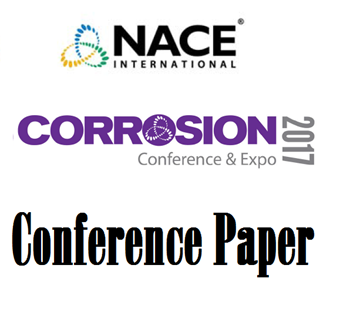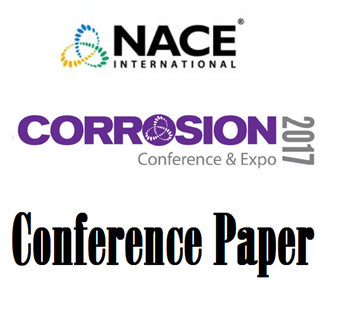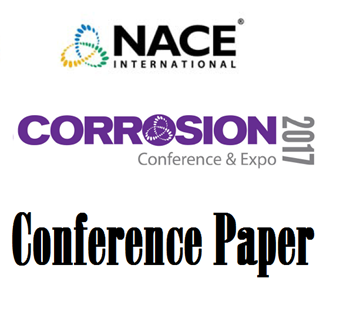Mathematical Modeling of Potential and Current Distributions for Atmospheric Corrosion of Galvanic Coupling in Airframe ComponentsChao Liu Veronica Rafla John R. Scully Robert G. KellyDepartment of Materials Science and EngineeringUniversity of Virginia395 McCormick Rd Charlottesville VA 22904A thin chloride-containing electrolyte film can be established on surfaces in many marine environments due to splash/spray rain or salt-enabled deliquescence [1]. The geometry of faying surfaces and fastener holes inherently aid in the trapping/wicking of the electrolyte into tight crevices typical of these component joining locations. This geometry leads to a severe localized atmospheric corrosion environment where a galvanic cell can be established for example between aluminum alloy components and stainless steel fastener.Over the last several decades finite element method (FEM) has been extensively applied in mathematical modeling for localized corrosions especially simulations of the potential and current distributions [2-3]. These FEM-based models can give insights into controlling processes as well as provide guidelines to predict localized corrosion susceptibility. However a key limitation of these models is that only surface layer interactions have been studied making the geometry simpler to tackle computationally. More relevant geometries are more complicated.The overall goals of this work are to develop a quantitative scientific understanding of the effects of important external variables on the electrochemical potential and current distributions that develop in fastener hole configurations involving a realistic thin film/galvanic couple configuration between a 7050- T7451 component and a CRES 316 fastener and investigate how these potential and current distributions correlate potential local damages on the metal surfaces in the galvanic coupling.A combination of experimental and modeling approaches are being used to characterize key processes and important external factors in atmospheric localized corrosion. Regarding the modeling framework two aspects require definition: the governing equation and the boundary conditions. The Laplace equation is used to model steady state potential and current distributions under thin film electrolyte conditions ignoring ion species diffusion and changes in solution chemistry. The use of the Laplace equation relies on a knowledge or estimation of the electrolyte characteristics (primary conductivity) and its dependence on position and other experimental variables. FEM modeling is applied to numerically determine the potential and current distributions in the thin film at steady state for the range of geometries and environments. To accomplish this objective a series of appreciate electrochemical kinetics for the CRES 316 and 7050-T7451 alloys were determined experimentally and then served as boundary conditions in the modeling. These kinetics were developed in solutions designed to mimic the chemistry of the cathodic and anodic areas. The sensitivity of the potential and current distributions to the kinetic parameters as well as the geometric details will be presented and discussed. These distributions are in turn shown to be key factors that control corrosion damage evolution in AA 7050-T7451.AcknowledgementThis work has been supported by the Office of Naval Research (ONR) Grant N00014-14-1-0012. Mr. William Nickerson Technical Officer at Office of Naval Research is gratefully acknowledged.References[1] G.A. Shoales S.A. Fawaz M.R. Walters in: M. Bos (Ed.) ICAF 2009 - Bridging the Gap Between Theory and Operational Practice Springer Rotterdam The Netherlands 2009 pp. 187-207.[2] S.M. Sharland C.P. Jackson and A.J. Diver Corrosion Science 29 (1989) 1149-1166.[3] J.X. Jia A. Atrens G. Song and T.H. Muster Materials and Corrosion 56 (2005) 468-474




